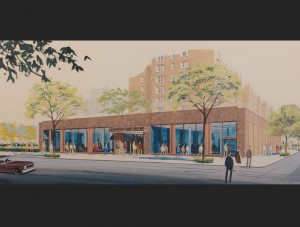The earliest monument in the Roman Forum and a crucial example of a pre-existing pagan building being converted into a Christian sanctuary, Santa Maria Antiqua provides a singular visual map of the shift from Antiquity to the nascent Christian era. Founded in the mid-fifth century, abandoned and effectively sealed off by the ninth, the church’s collection of 6th-8th century wall paintings has no rival in any part of the world for understanding the development of early medieval and Byzantine art. While many paintings of the actual former Byzantine Empire were destroyed in the 8th century Iconoclasm movement against the cult of images, Santa Maria Antiqua lay quietly buried with all its wealth of Christian heritage art for 1000 years. Since its rediscovery in 1900, scholars have been puzzling out how to admit the public to this treasure trove while preserving the church’s walls. Finally, by next year, the public will be invited to walk through this doorway to the ancient past.
Since its consecration in the 6th century A.D., Santa Maria Antiqua was decorated for over three centuries in wall painting schemes, many of of which are still preserved. The famous palimpsest to the right of the apse amazingly features seven superimposed layers with the earliest layer dating back to the pagan pre-Christian era. Five of the layers are painted and one bears the traces of original color. The restorers of The Santa Maria Antiqua Project, in collaboration with the World Monuments Fund since 2001, have scrupulously analyzed and documented every square inch of their conservation process. With a site so old and valuable, preservation challenges such as moisture control and treatments are imaginably profound but the painstaking work is at last drawing to a kind of conclusion. Santa Maria Antiqua will continue to be a site of wondrous discovery for art historians and preservationists but it is at last reaching a state for the public to join in the exploration.




